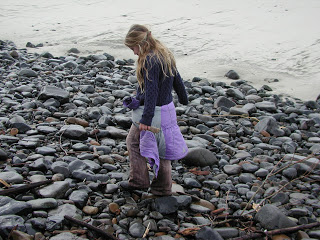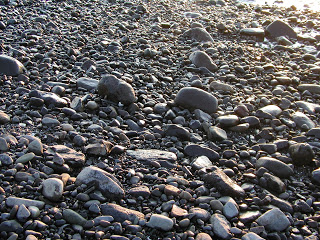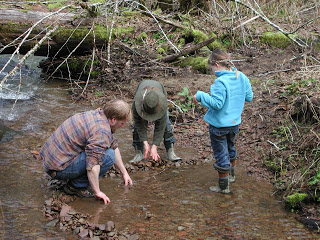Also referred to as Sensory Integration Dysfunction, Wikipedia defines it as, “a neurological disorder that was first studied in-depth by Anna Jean Ayres. Ayres describes sensory integration as the ability to organize sensory information for use by the brain. An individual with sensory integration dysfunction would therefore have an inability to organize sensory information as it comes in through the senses.” My take on it is that our modern world can be hard for people to live in. There’s a lot of activity, a lot of loud noise, a lot of flashy visuals bombarding us constantly, and a lot of strong smelling synthetic products. Most of us just tune it all out and go about our lives, but I think some folks are more sensitive and can’t seem to block it out. For them, it’s very overwhelming and overstimulating, and their systems just go into overload mode. This is where we see behavioral issues come up, social issues, compulsive chewing, melt-downs, and overall spacey behavior as they try to cope with feeling so out of sorts.
Specialists recommend that these children with sensory processing difficulties need to work on their proprioceptive input. Proprioception, according to http://www.sensoryprocessingdisorder.com/, is defined as:
So, they call this work, “Heavy Work Activities.” Sounds like hard work, doesn’t it? It’s all actually very simple things. I’ve heard it referred to as a “Sensory Diet“. Gross motor activities like carrying heavy objects, pushing heavy objects, wearing a weighted vest or blanket, jumping, climbing, wrestling, being hugged or squished (comfortably), and walking on sand and rocks are all part of a sensory diet. So are fine motor activities like painting, drawing, baking, kneading dough, scrubbing, using clothespins, playing with clay, squeezing stress balls, using sidewalk chalk, sanding wood, and sand play are also part of this “diet.” Oral motor activities include chewy foods, foods with different textures that require a lot of jaw action, suckers, straws, hard candies, blowing bubbles, and blowing up balloons. The thing about most of these activities is they are things that kids normally do, and the idea is to incorporate more of them.
The one I want to focus on here is walking on uneven surfaces. This addresses the propriceptors in the feet, as well as the sense of balance. I learned about proprioception in physical therapy after I was hit by a car on my bicycle and ended up not walking for three months. When my leg got out of that cast, it was jello. The physical therapist kept doing things to stimulate the proprioceptors in my foot and ankle. They had this nifty room with all this equipment to simulate things like walking on uneven surfaces such as sand and rocks. I asked her if I could just go to the beach and walk on the rocks, and she said absolutely! I wondered, why walk on a bunch of fake rocks in a PT exercise room, when I could go on an outing to the beach? We made a lot of trips out to the ocean that winter.




How wonderful that you found ways to help and understand your son!
I have to tell you……..the first picture of your daughter……I LOVE her pants! Oh, I'd love a pair of those for me!
Thanks for writing this Lara.It's beautifully written and I truly feel it will help a lot of people!
P.S. I think your awesome
Thank you Thank you im going thro a lot of assesments with our 3 year old its a long road so to speak but we start early learning center next week and all that you just talked about is what one of the ladys at the center is going to get our little one tested for well assesed for i thought it weird at first because she never went in to details but you just shed light on it for me our little angel beautiful busy ..but misunder stood baby girl often gets not so nice looks when out but she really just carnt cope with over crowded shops or small spaces and she is ever so busy all the time with a speech delay and a few other things a very high pain tolerance she is just so differnt than our 3 older children ..but loved so very much she is a sweet little blessing that i feel iv been blessed with i feel she is here to teach me things …if that makes any sence 🙂 and what a lovley blog you have i found yours thro Taryn Kae wilson and what a beautiful couple her and her husband are and there little bundle of joy!!
I hope this information will be helpful to other folks working on these things, because it's been a long journey for us and I feel like I've learned a lot. There is so much information out there, and always so many suggestions of ways to help our son, but I am always looking for those simple solutions we can weave into our life as seamlessly and naturally as possible.
Good luck to you primitive ole frugal mumma! This is a good age to be looking at these things and figuring them out. And I'm so glad you found me through Taryn's blog. They are dear friends, and I think she has a lot of inspiring ideas to offer for creating a joyful life!
I just happened upon your blog and so glad I did. I just copied this and want my daughter to read it. Her little 7 year old daughter is much like this. She is constantly chewing on her hair or clothes and cannot handle loud noises. They have her on ADHD meds which I totally don't agree with. She goes to the doctor tomorrow and she wants me to go in with them to talk to the doctor. I am bringing this with me. Thanks so much. I am glad I saw this.
Kris, I am so glad to hear that this might be of some help! Have your daughter visit the website I linked to, because they had a lot of really helful information too. If you can find a local occupational therapy office, they might also be a good resource. Good luck!
Hi Lara i was ment to get back to you about all this but in Aug2011 our little girl molly got dignose with Autisum so at least we have answers as such and are abe to help her now ,also she was dignosed with systematised epidermal naevus , any how as i said its been a long process and the month after she was dignose my mum was dignosed terminaly ill with cancer after being misdignosed for 18 months once they finally listened it was to late she was gone 6 weeks later and that was 8 weeks ago , so 2011 was not such a good year but life goes on i guess i just pray it will get a little easier!!
Heidi.
Oh, Heidi, it sounds like you've been through a lot this year. I'm sorry about your mom, and the diagnosis for your kiddo. I know that getting the Autism diagnosis can get you a lot of help and support through all sorts of places, so I hope you are getting lots of support and that it gets easier as time goes along.
Lara